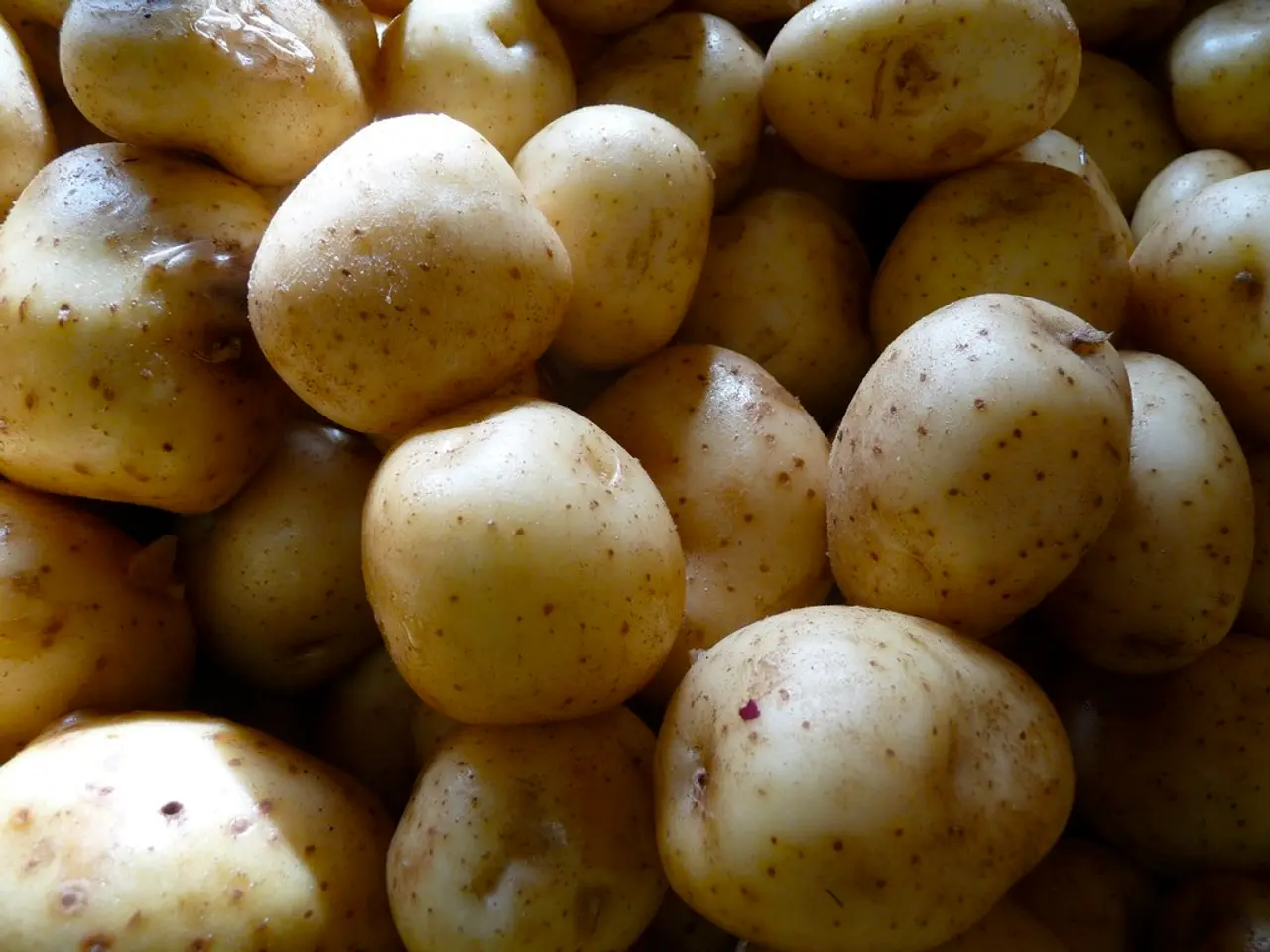Maintaining Long-Term Potato Storage Without the Use of a Root Cellar
Viva la Tater Trot!
Growing potatoes in your backyard garden can be damn satisfying, especially when you don't need to worry about them freezing to death. But once ol' Man Winter comes knocking, it's time to dig 'em up and store 'em right to last through the cold months. No root cellar? No problem! Let's dive into how to keep your spuds fresh and delicious all winter long.
Curing & Sorting Your Fresh Potatoes
Not all potatoes are equal in their ability to survive the winter. Russets and their thick-skinned buddies can hang on for a long ass time, while thinner-skinned varieties like reds and whites won't last as long. If you're growing a mix of 'em, use the thin-skinned ones first, and save the russets for later in the season.
- Cut Back the Water: If you're growing your own potatoes, start cutting back on watering about two weeks before harvest. Let the plant die back completely before you dig 'em up.
- Brush off the Dirt: Gently rub off the dirt without washing them, as excess moisture ain't good for long-term storage.
- Cure 'Em: Lay the potatoes on a bed of newspaper or similar material in a cool, dark place for about 10 days to cure them. Aim for humidity levels around 90%, but keep temperatures closer to 60°F.
- Sort 'Em: After curing, go through each potato and only keep the perfect ones for long-term storage. Ditch any with soft spots, mold, green ends, open cuts, or signs of pest damage.
Long-Term Storage for Your Potatoes
To keep your potatoes fresh, you'll want a container that's well-ventilated—a crate, box, basket, or even paper sacks work. Steer clear of plastic bags, as they draw in too much moisture. Potatoes can touch in the container, but layering them with shredded paper or straw enhances airflow and prevents bruising.
Potatoes need to be stored in a cool, dark place where the temperature never rises above 55°F and never falls below freezing. If you're aiming for around 35-40°F, your potatoes will last longest. While some say it's fine to store 'em in the fridge, it's generally not advisable as it causes the skin to shrivel. A basement, crawl space, or garage is perfect if you ain't got a root cellar. Cover the container to block light, but remember to cut a few ventilation holes if you're using something solid like a box or bag.
Check on your potatoes every couple of weeks to make sure nothing's sprouting or going soft. If it is, remove it immediately to prevent ruinin' the whole batch.
Potato Storage Tips and Tricks
- No Fruit Around: Keep your potatoes away from apples or other fresh fruit, as they let off ethylene gasses that cause potatoes to sprout and spoil.
- No Onions Nearby: Storing potatoes with onions ain't a good idea either, as they release gasses that speed up the ripening process.
- Don't Wash 'Em: Wash 'em only when you're ready to cook 'em, as exposure to moisture promotes sprouting and spoilage.
- Watch Out for Green Skin: Sunlight can cause green skin, which tastes bitter and is toxic. If you notice green parts, remove 'em before cookin'.
- Clip Sprouts: Remove sprouts as you see 'em, unless you're planning to use the potato as a seed potato.
- Pre-Cooking: Allow potatoes to sit out for a few days before cooking to let the storage sugars convert back to starch, enhancin' the flavor.
Storing potatoes long-term without a root cellar ain't rocket science, but it can be a learning curve. If you've got access to a basement, count your blessings. If not, we've successfully kept veggies in our garage for several years. Just hold off on diggin' 'em until temperatures start dropin'.
If you're yearnin' to reconnect with your food, nature, and the old-fashioned way of life, welcome to the club. Join over 40,000 folks like-minded folks in my Facebook group, "The Self Sufficient Life," by clickin' here.
Sources:
- Bepler, C., & Orozco-Cárdenas, O. (2019). Proper potato storage greatly reduces Blackleg incidence in Washington state. HortTechnology, 29(2), 232.
- Bort, A. (2014). Proper storage of potatoes cuts spoilage and aids in food safety. Penn State Extension.
- Kilgore, M. (2021). Potato storage FAQs for home gardeners. Extension.org.
- Norton, D. (n.d.). Storage of potatoes. Colorado State University Extension.
- Henderson, A. (n.d.). Potato storage methods. University of Idaho Extension.
- To maintain the freshness of your home-grown potatoes throughout the winter, store them in a well-ventilated container, such as a crate, box, basket, or paper sacks, in a cool, dark place that neither rises above 55°F nor falls below freezing.
- When realizing your home-and-garden lifestyle includes long-term potato storage, avoid using plastic bags, as they draw in too much moisture, and instead opt for containers that allow for good airflow, such as a crate or box with ventilation holes.







